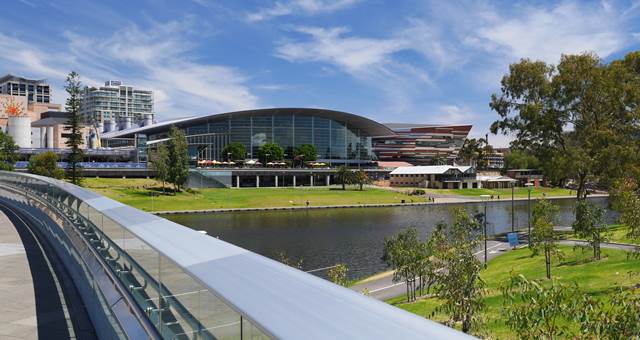A wave of new trends is set to hit the conference and meetings industry, driven by changes in the business world that will provide a number of challenges for conference organisers, says the PCO Association. And it’s the key topic for their upcoming 2011 Conference.
Among the issues identified by conference management industry insiders are the ever-changing technology landscape, the global economy, and significant increases in travel and accommodation costs for delegates to conferences and large meetings.
The Professional Conference Organisers (PCO) Association, which represents 75 PCOs in Australia and New Zealand, is poised to identify and address those challenges.
Changes to how conferences and large meetings are run may be driven by factors including increasing costs and delegates who are time-poor and looking to maximise the value of their attendance.
This may mean shorter meetings as delegates find it more difficult to get away for more than two or three days, including travel time. More one day meetings and a rapid growth in delegates and organisations wanting access to individual session tickets rather than day or full conference registrations are seen as potential moves in the future.
The increased use of video and web-based conferencing could also allow greater numbers of delegates to ‘attend’ without leaving their home states.
Mary Sparksman, a director of Brisbane event management company YRD, says she believes meetings are likely to become shorter as people become increasingly time-poor.
“Lots of people are now wanting to buy session tickets rather than full registrations for conferences, although at YRD we haven’t yet seen a trend towards video or web-based meetings,” she says.
Francis Child, managing director of Sydney-based PCO, Conference Action Pty Ltd, says while there will be increased use of live web-streaming of presentations and keynote speeches for people who are unable to attend conferences, most delegates are still travelling often and want to get the most out of their conference.
“There is a slight trend towards including one day of the weekend in a meeting – say, Thursday to Saturday or Sunday to Tuesday – because people can’t get away for so long in work time,” he says. “We work mostly with associations, which are made up of people from lots of different companies, and it’s not uncommon for delegates to take holiday time in order to attend meetings and conferences.
“Nationally, we are not seeing a trend to one-day meetings because delegates want at least a couple of days. While there might a trend towards web-based meetings in some areas, people still want to network within their peer group and expertise niche, they want to talk and exchange ideas and you can’t do that so well through web-based meetings.
“But there might still be one or two keynote presentations that are either streamed live or recorded and posted on the web later for those who couldn’t make it,” he says. “At the end of the day, networking has always been important.”
Anne-Marie Quinn, managing director of Adelaide-based All Occasions Group, says demand for pre and post-conference touring has “slowly diminished” in recent years.
“People now don’t have the time to take off – they might stay for the weekend before or after but are no longer looking to tie a conference in with annual leave, unless perhaps they are in an unusual destination,” she says. “Conferences are not necessarily getting shorter but people want to minimise the time they are away.”
Quinn says she has seen day registrations rise dramatically, depending on the location. “If it’s a major city like Melbourne, companies based there might send an employee for a day but wouldn’t send them interstate for three days out of the office.”
She agrees that video and web-streaming has not made inroads into the conference market, except perhaps for corporate meetings.
“The emotional connection and ability to eyeball people face to face cannot be replicated by technology.”
Suzanne Hart, who owns and operates one of Melbourne’s leading boutique event management companies, Suzanne Hart Events (SHE), says “short, sharp networking events” are what people want to be involved in today.
“Some people would prefer to send their people along to a series of shorter professional development events than give them three days out of the office,” she says.
Child says the association market is becoming more organised and professional, with networks becoming increasingly stronger and continuing to grow.
“In the past, many associations were run by volunteers, but now they are becoming more professional, with secretariats and/or their own staff, as people become more time-poor,” he says.
Social media is another increasingly important aspect of the conference and meetings industry. Child says it is not uncommon today to find conferences setting up Twitter accounts and having audience members tweet from their seats.
“That kind of instant feedback on events will become quite important and is potentially a very powerful tool,” he says.
Changing styles of conference venues are also being seen. Many conferences are now opting for locations in the CBD and suburbs of major centres rather than choosing resort-style venues, enabling delegates to cut down on travel time once they have flown in to the destination.
Quinn says changing trends in venue hire have included an increased focus on security and risk management but most conferences are still held in hotels and convention centres because of size and logistics.
“It’s nice to be creative but if the facilities are not right that will limit the choices,” she says.
Sparksman also says she is noticing that a number of clients are choosing convention centres over traditional hotels for two to three day meetings, often because there are a greater number of breakout rooms available and because of cost effectiveness.
Cost is also a factor in determining the length of meetings and what is included for delegates, as the industry becomes more competitive.
Sponsorship dollars – which traditionally support some of the conference costs – are shrinking, leading to higher registration fees and fewer inclusions.
“There is only so much in the pot,” says Sparksman. “In the past few years companies have been finding things a bit tougher and they are more cautious about where they are spending their money. Organisers have to find ways of economising – that might mean taking out a dinner or cutting back on the costs of the conference satchel, for example.”
Suzanne Hart believes that the challenge for PCOs in the future will be to make conferences and events as cost effective and efficient as possible for their clients, working within a budget.
“It’s time that we all looked at things differently and important not to get stuck in a format,” she says. “We need to be looking for solutions for our clients, to help them design an event that is efficient for them.
“My gut feeling is that you don’t always need a three day event; you should be looking at the type of event the client wants and how that fits. The ‘norm’ may have to change.
“There is a world of opportunity for events, we just need to make it work by using our business skills and applying them to our clients’ needs. It needs to be a partnership, working together to make great events, helping them create any kind of event they want.”


